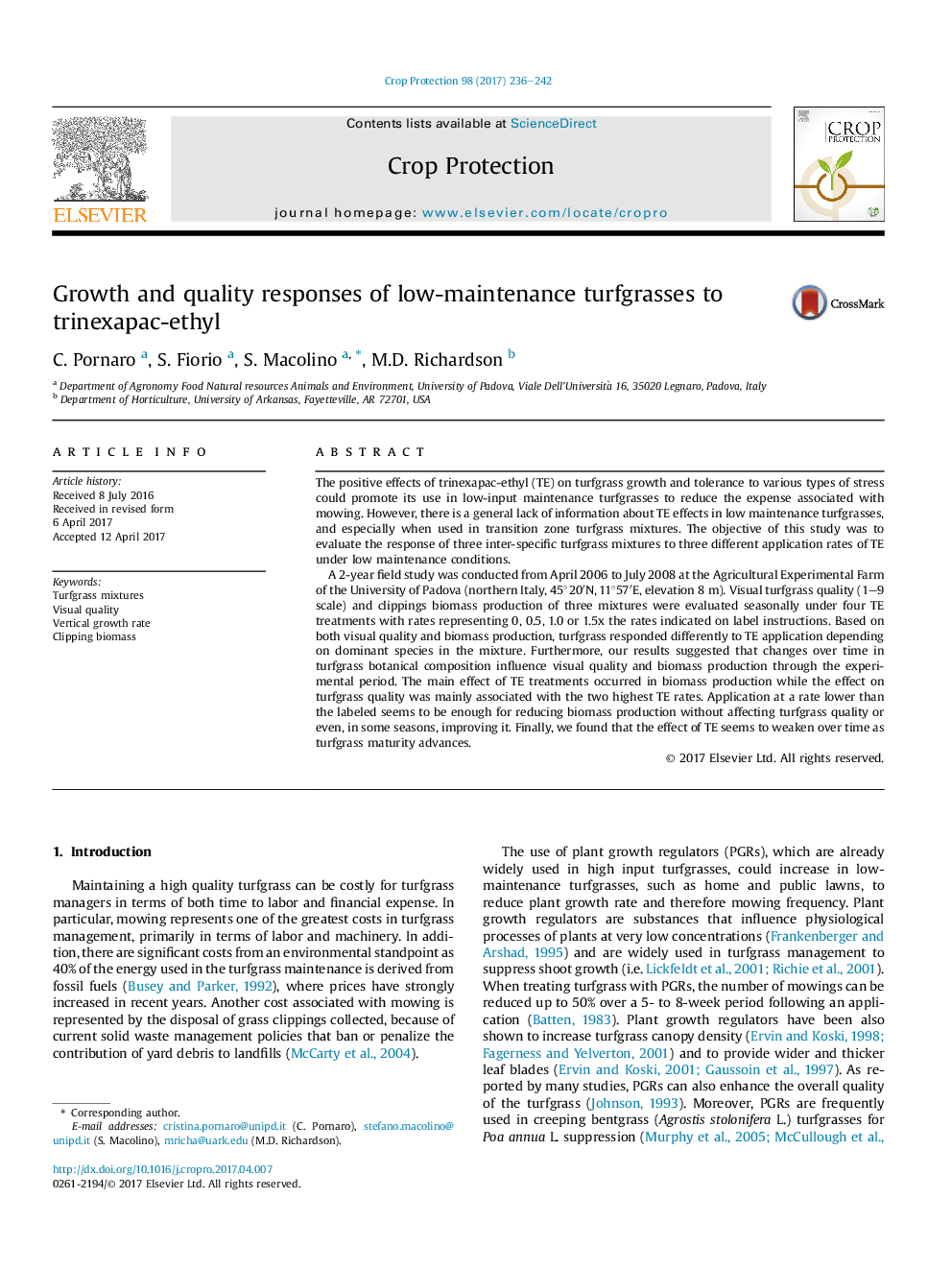| Article ID | Journal | Published Year | Pages | File Type |
|---|---|---|---|---|
| 5760905 | Crop Protection | 2017 | 7 Pages |
Abstract
A 2-year field study was conducted from April 2006 to July 2008 at the Agricultural Experimental Farm of the University of Padova (northern Italy, 45°20â²N, 11°57â²E, elevation 8 m). Visual turfgrass quality (1-9 scale) and clippings biomass production of three mixtures were evaluated seasonally under four TE treatments with rates representing 0, 0.5, 1.0 or 1.5x the rates indicated on label instructions. Based on both visual quality and biomass production, turfgrass responded differently to TE application depending on dominant species in the mixture. Furthermore, our results suggested that changes over time in turfgrass botanical composition influence visual quality and biomass production through the experimental period. The main effect of TE treatments occurred in biomass production while the effect on turfgrass quality was mainly associated with the two highest TE rates. Application at a rate lower than the labeled seems to be enough for reducing biomass production without affecting turfgrass quality or even, in some seasons, improving it. Finally, we found that the effect of TE seems to weaken over time as turfgrass maturity advances.
Keywords
Related Topics
Life Sciences
Agricultural and Biological Sciences
Agronomy and Crop Science
Authors
C. Pornaro, S. Fiorio, S. Macolino, M.D. Richardson,
